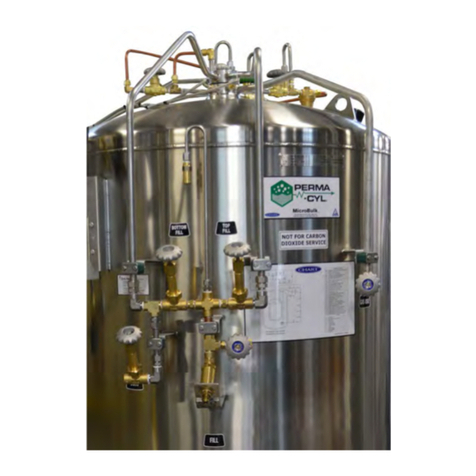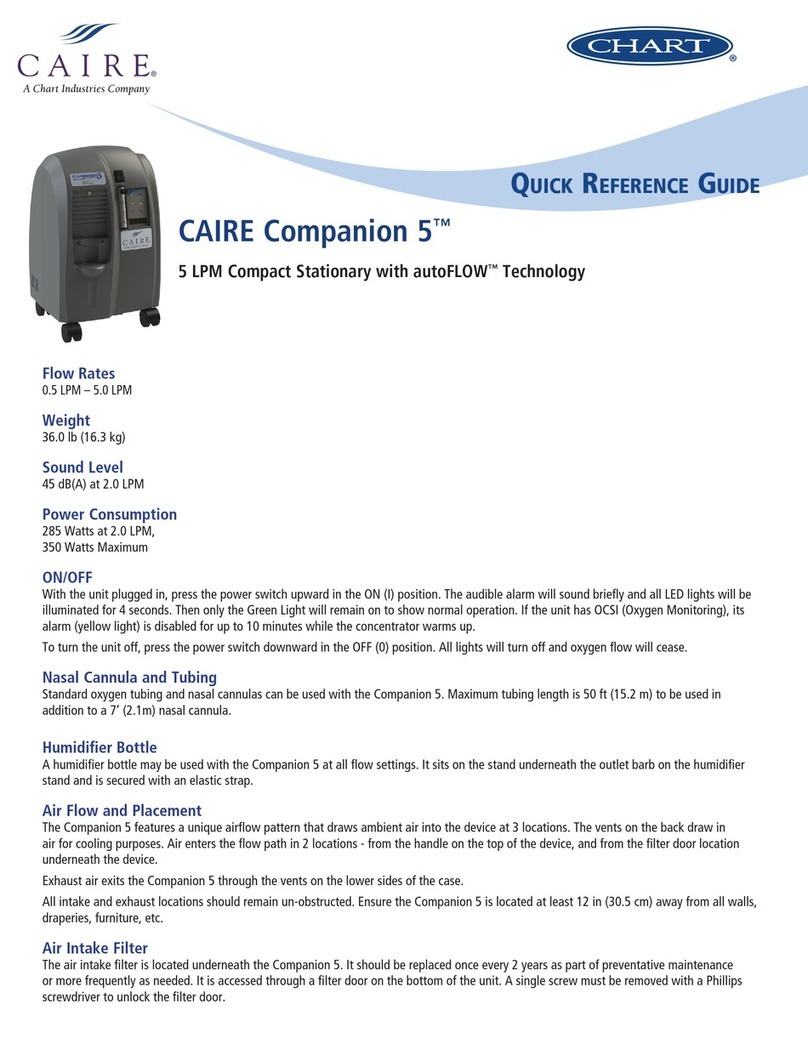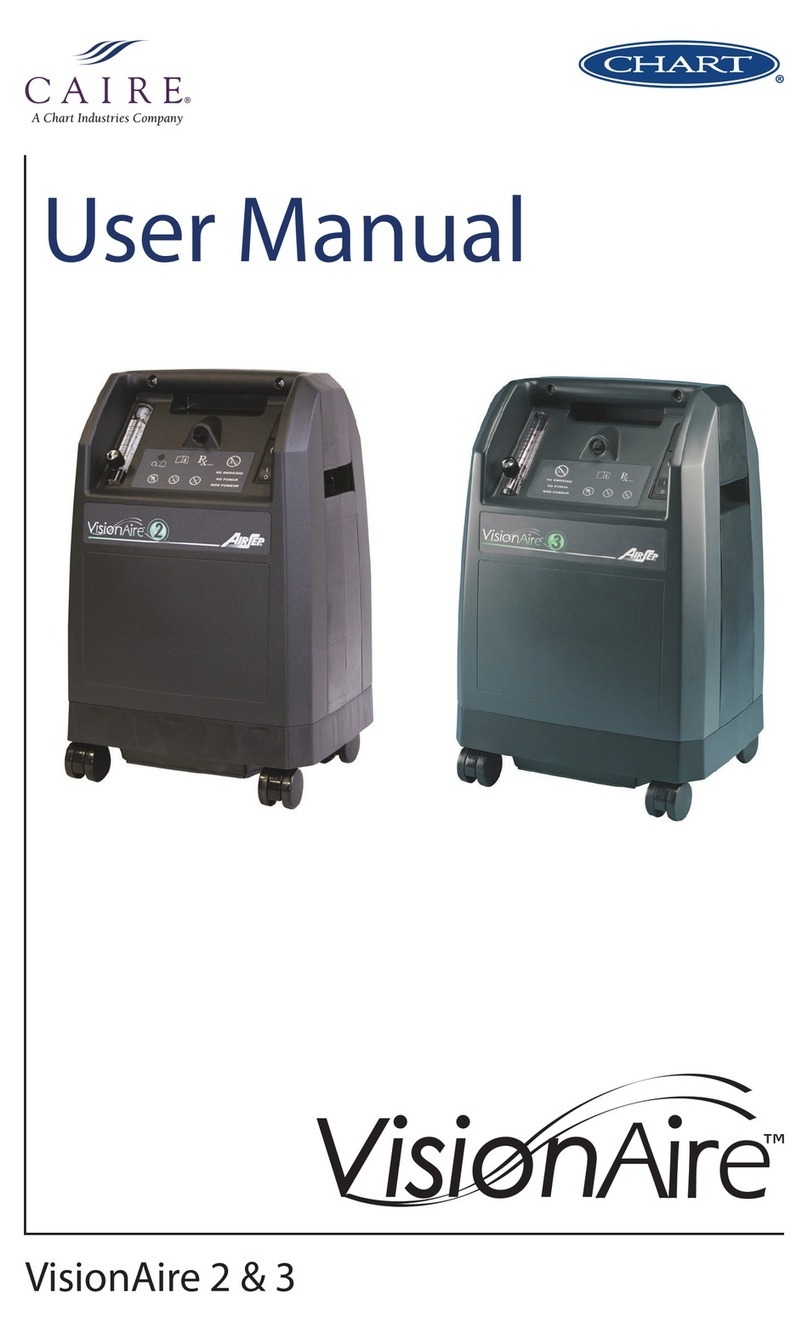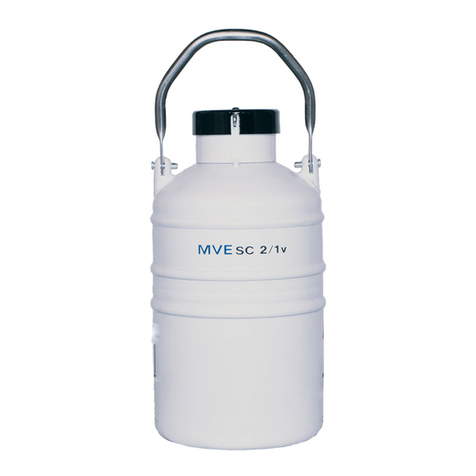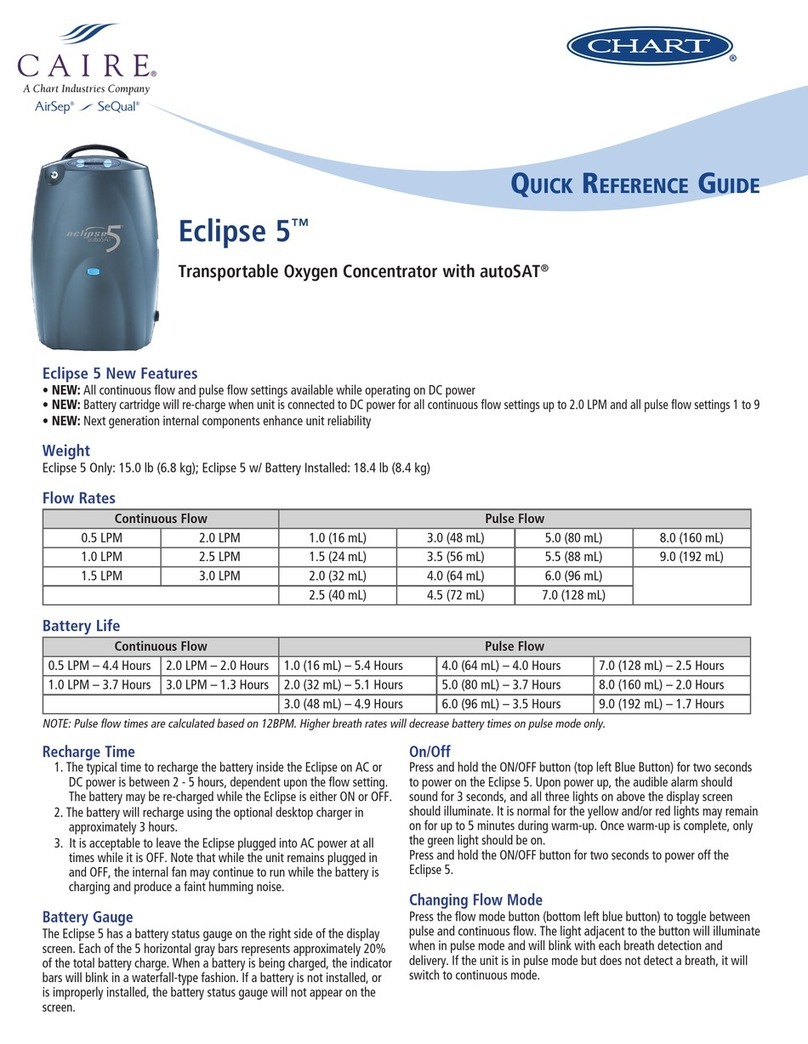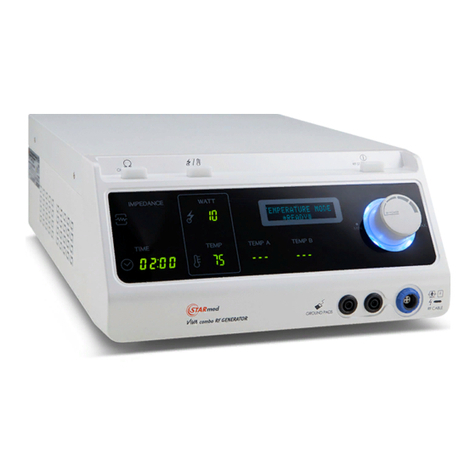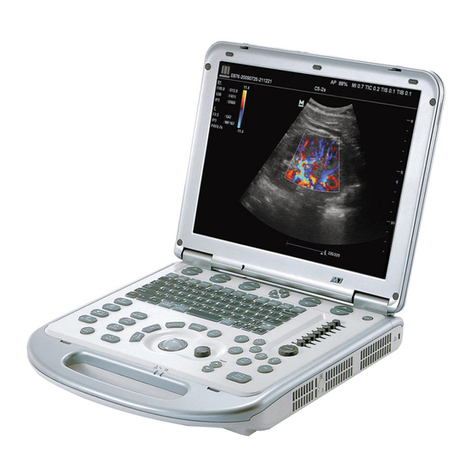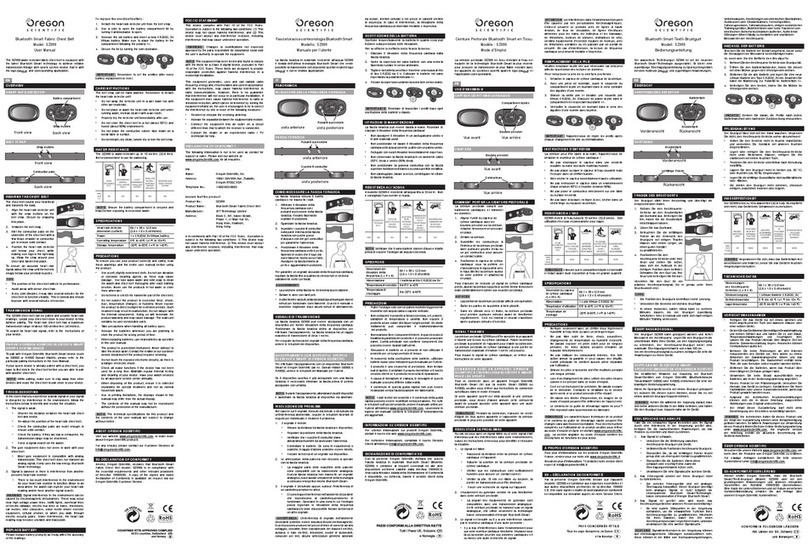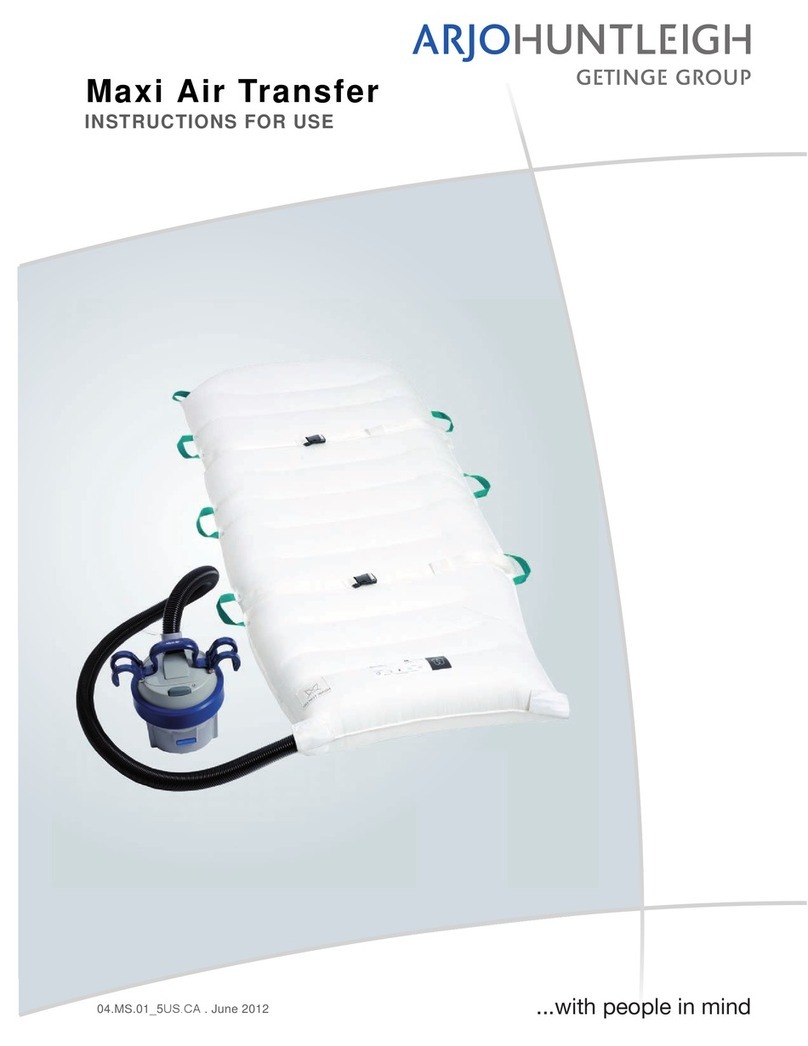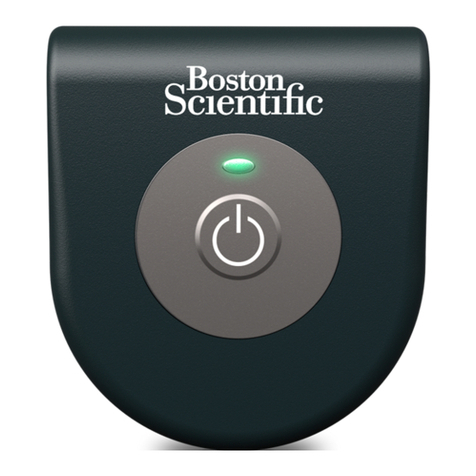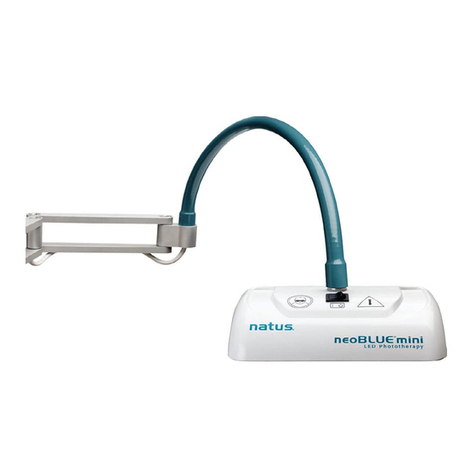CHART ULTRADOSER 2K Instruction Manual

ULTRADOSER 2K
USER MANUAL

Table of Contents
Introduction....................................................................................................................................................4
Safety .............................................................................................................................................................6
Receiving Your UltraDoser 2K......................................................................................................................9
Overview and Utilities .................................................................................................................................10
Product Specifications.......................................................................................................................10
Utility Requirements.........................................................................................................................10
UltraDoser Body Dimensions......................................................................................................................11
UltraDoser 2K Components.........................................................................................................................13
Standard Components .......................................................................................................................13
Optional Components .......................................................................................................................14
Installation....................................................................................................................................................15
Application Evaluation......................................................................................................................15
Support Stand Location.....................................................................................................................15
Mounting the UltraDoser Unit..........................................................................................................16
Connecting the Distribution Block ...................................................................................................17
Installing the Nozzle .........................................................................................................................18
Positioning the Dosing Head.............................................................................................................18
Installing the Bottle Detect Sensor....................................................................................................19
Installing the Timing Sensor.............................................................................................................19
Installing the Encoder .......................................................................................................................20
Installing the 2K Controller ..............................................................................................................22
2K Controller Adjustments..........................................................................................................................24
Home Screen.....................................................................................................................................24
About.................................................................................................................................................25
Languages .........................................................................................................................................26
Setup..................................................................................................................................................27
Access and Passwords.......................................................................................................................28
System Settings.................................................................................................................................29
Calibration.........................................................................................................................................30
Recipes..............................................................................................................................................33
Maintenance......................................................................................................................................36
Maintenance Modes ..........................................................................................................................36
Graphs...............................................................................................................................................38
Inputs/Outputs...................................................................................................................................40
Alarms...............................................................................................................................................45
Alarm History ...................................................................................................................................47
Daily Operating Procedures.........................................................................................................................48
Dura-Cyl Dewar Fed System............................................................................................................48
Bulk Tank (House Fed) System........................................................................................................51
Service and Maintenance .............................................................................................................................54
Nozzle Change Out...........................................................................................................................54
Nozzle Cleaning................................................................................................................................54
Purging with Gaseous Nitrogen ........................................................................................................55
Common Replacement Parts........................................................................................................................56
General Trouble Shooting............................................................................................................................61
Warranty.......................................................................................................................................................63
Appendix A –Sensor Positioning................................................................................................................64

Introduction
Thank you for your purchase of the Chart Inc. (Chart) UltraDoser 2K Liquid Nitrogen (LN2) Dosing
System. Chart has designed and fabricated your system with attention to detail and utilizing the leading
cryogenic technologies to ensure a high efficient and reliable system.
Please contact us with any questions or comments that you may have. If after reading this manual you are
not confident in carrying out any task, please call Chart’s service team at +1 408.371.4932.
Service
Chart’s UltraDoser 2K has been designed for years of safe and dependable operation. In the event service
is required, please contact Chart at:
Chart Inc.
161 Baypointe Parkway
San Jose, CA 95134 USA
www.chartdosers.com
+1 408.371.4932
Manufacturer
The UltraDoser 2K is designed and manufactured by:
Chart Inc.
161 Baypointe Parkway
San Jose, CA 95134 USA
www.chartdosers.com
+1 800.371.3303
Design Modification
DO NOT use this product in a manner not consistent with the instruction outlined in this manual.
NEVER alter the design, or perform service that is not consistent with the instructions outlined in this
manual, without prior written approval of Chart.
Additional Copies
Additional copies of this manual are available by contacting Chart:
Chart Inc.
161 Baypointe Parkway
San Jose, CA 95134 USA
www.chartdosers.com
+1 800.371.3303
No part of this document may be reproduced in any form, or by any means, without the prior written
permission of Chart Inc. Copyright 2013
Chart Inc.

This manual is intended for use by Chart UltraDoser 2K operators. It is important to read and understand
the information in this manual before installing or operating the system. This manual is provided by
Chart to its customers as a courtesy and, except as expressly provided in this manual, CHART MAKES
NO WARRANTIES, EXPRESS OR IMPLIED, REGARDING THE CONTENTS IN THIS
MANUAL. CHART ASSUMES NO REPONSIBILITY FOR ANY OUTCOMES AS A RESULT
OF USING THIS MANUAL.
SAFETY FIRST!
Liquid nitrogen must be handled properly. Without proper handling, severe frost bite, cryogenic burning,
oxygen deprivation, and bursting of sealed bottles (or containers) can result.
During this process, you may need:
Safety glasses with side shields and/or protective face shield
Insulated gloves for cryogenic service
Symbols and statements used throughout this text and their meaning are as follows:
Text following this symbol needs extra attention.
IMPORTANT: Text like this is extra information helpful to the situation
CAUTION: Text like this is information to help avoid personal injury and/or property damage.
WARNING!: Text like this is information to help avoid serious personal injury or death and/or
property damage.

Safety
WARNING!: Your UltraDoser 2K may be fed by a vacuum insulated pipe system designed to
contain pressurized, ultra-cold cryogenic liquids. These systems should only be worked on by
trained personnel to avoid serious injuries such as freezing, oxygen deficient atmosphere and
extremely high pressures.
WARNING!: Any configuration which allows a trapped volume of cryogenic liquid or cold gas
must be protected by a pressure relief valve. As the cold liquid/gas gains heat, the contents will
expand and increase in pressure. A section not protected by an over-pressure relief valve will
experience extremely high pressures and significant safety concerns.
WARNING!: Over pressurization of bottles (or containers) can occur while using Chart’s
UltraDoser 2K potentially bursting the bottles (or containers). Proper calibration of the
UltraDoser 2K ensures optimum nitrogen doses to avoid over pressurization. Be sure to remove
any bottles (or containers) that receive more than its proper LN2doses before sealing.
WARNING!: If you are at all unsure of how to safely work on this system, STOP and contact
Chart immediately at +1 408.371.4932.
CAUTION: As with any cryogenic system, it should be observed that any non-insulated piping can get
extremely cold and should not be touched by exposed skin. If the system requires maintenance, it should
be shutdown and allowed to warm up.
Strict compliance with proper safety and handling practices is necessary when using a cryogenic
system. We recommend that all our customers re-emphasize safety and safe handling practices to all their
employees and customers. While every possible safety feature has been designed into the system and safe
operations are anticipated, it is essential that the user of the cryogenic system carefully read to fully
understand all WARNINGS and CAUTION notes listed in this safety summary and enumerated below.
Also read the information provided in the Safety Bulletin for Inert Gases following this Safety Summary.
Periodic review of the Safety Summary is recommended.
WARNING!: Nitrogen vapors in air may dilute the concentration of oxygen necessary to
support or sustain life.
Exposure to such an oxygen deficient atmosphere can lead to unconsciousness and serious injury,
including death.
CAUTION: Before removing parts or loosening fittings, empty the UltraDoser FS150 of liquid and
release any vapor pressure in a safe manner.
External valves and fittings can become extremely cold and may cause painful burns to personnel unless
properly protected. Personnel must wear protective gloves and eye protection whenever removing parts or
loosening fittings. Failure to do so may result in personal injury due to the extreme cold and pressure in
the system.

WARNING!: Accidental contact of liquid gases with skin or eyes may cause a freezing injury
similar to a burn.
Handle liquid so that it will not splash or spill. Protect your eyes and cover skin where the possibility of
contact with liquid, cold pipes and equipment, or cold gas exists. Safety goggles or a face shield should be
worn if liquid ejection or splashing may occur or cold gas may exit forcefully from equipment. Clean,
insulated gloves that can be easily removed and long sleeves are recommended for arm and hand
protection. Cuff less trousers should be worn over the shoes to shed spilled liquid.
Safety Bulletin
Portions of the following information are extracted from Safety Bulletin SB-2 from the Compressed Gas
Association, Inc. (CGA). For the full text of Safety Bulletin SB-2 and for more information about oxygen
atmospheres, refer to Safety Bulletin SB-2 from the Compressed Gas Association, Inc. (CGA) at
http://www.cganet.com. Additional information on nitrogen and liquid cylinders is available in CGA
Pamphlet P-9. Write to the Compressed Gas Association, Inc., 1235 Jefferson Davis Highway, Arlington,
VA 22202 or visit their website at http://www.cganet.com.
Oxygen Deficient Atmospheres
The normal oxygen content of air is approximately 21%. Depletion of oxygen content in air, either by
combustion or by displacement with inert gas, is a potential hazard. Users should exercise suitable
precautions.
One aspect of this possible hazard is the response of humans when exposed to an atmosphere containing
only 8 to 12% oxygen. In this environment, unconsciousness can be immediate with virtually no warning.
When the oxygen content of air is reduced to approximately 15 or 16%, the flame of ordinary combustible
materials, including those commonly used as fuel for heat or light, may be extinguished. Somewhat below
this concentration, an individual breathing the air is mentally incapable of diagnosing the situation. The
onset of symptoms such as sleepiness, fatigue, lassitude, loss of coordination, errors in judgment and
confusion can be masked by a state of "euphoria," leaving the victim with a false sense of security and
well being.
Human exposure to atmosphere containing 12% or less oxygen leads to rapid unconsciousness.
Unconsciousness can occur so rapidly that the user is rendered helpless. This can occur if the condition is
reached by immediate change of environment, or through the gradual depletion of oxygen.
Most individuals working in or around oxygen deficient atmospheres rely on the "buddy system" for
protection - obviously, the "buddy" is equally susceptible to asphyxiation if he or she enters the area to
assist an unconscious partner unless equipped with a portable air supply. Best protection is obtainable by
equipping all individuals with a portable supply of respiratory air. Lifelines are acceptable only if the area
is essentially free of obstructions and individuals can assist one another without constraint.
If oxygen deficient atmosphere is suspected or known to exist:
1. Use the "buddy system." Use more than one "buddy" if necessary to move a fellow worker in an
emergency.
2. Both the worker and "buddy" should be equipped with self-contained or airline breathing
equipment.

Nitrogen
Nitrogen (an inert gas) is a simple asphyxiant. It will not support or sustain life and can produce
immediate hazardous conditions through the displacement of oxygen. Under high pressure these gases
may produce unconsciousness even though an adequate oxygen supply, sufficient for life, is detect.
Nitrogen vapors in air dilute the concentration of oxygen necessary to support or sustain life. Inhalation of
high concentrations of this gas can cause anoxia, resulting in dizziness, nausea, vomiting, or
unconsciousness and possibly death. Individuals should be prohibited from entering areas where the
oxygen content is below 19% unless equipped with a self-contained breathing apparatus.
Unconsciousness and death may occur with virtually no warning if the oxygen concentration is below
approximately 8%. Contact with cold nitrogen gas or liquid can cause cryogenic (extreme low
temperature) burns and freeze body tissue.
Persons suffering from lack of oxygen should be immediately moved to areas with normal atmospheres.
SELF CONTAINED BREATHING APPARATUS MAY BE REQUIRED TO PREVENT
ASPHYXIATION OF RESCUE WORKERS. Assisted respiration and supplemental oxygen should be
given if the victim is not breathing. If cryogenic liquid or cold boil-off gas contacts a worker's skin or
eyes, the affected tissues should be promptly flooded or soaked with tepid water (105-115oF; 41-46oC).
DO NOT USE HOT WATER. Cryogenic burns, which result in blistering or deeper tissue freezing,
should be examined promptly by a physician.

Receiving Your UltraDoser 2K
The UltraDoser 2K is designed for variable speed filling lines up to 2000 bottles (or containers) per
minute (under specific conditions). It will compensate for changes in line speed, ramp up, and ramp down
conditions.
Unpacking the UltraDoser 2K
The UltraDoser 2K will arrive in a specially designed shipping crate. If the system is intended to be
moved from one location to another, storing the crate for future use is ideal.
Upon arrival of the UltraDoser 2K, it is advised to immediately inspect for any signs of damage. If any
damage occurred in shipping, claims must be filed with the shipping carrier immediately prior to
unpacking the UltraDoser 2K.
While unpacking the crate, all contents should be carefully inspected. Things to check for upon arrival
include:
Dents in the UltraDoser unit
Male and female bayonets should be protected
Proper number of bayonet clamps/flanges and o-rings (one set for every female bayonet)
Any other components that were defined to ship loose
If there are any pieces listed on the Pack Slip and/or Materials List not in the shipping crate please contact
Chart immediately at +1 800.371.3303.
CAUTION: When removing the UltraDoser unit from the crate, gently set it on the ground. Do not drop
the UltraDoser unit! When transporting the UltraDoser unit through the facility, be sure to carry with
care. Take care not to run into walls or drag the UltraDoser unit on the ground.
Prior to installation, the UltraDoser 2K should be stored in a location that will prevent dirt, water or other
debris from getting inside the system. Similarly, it should be stored in a place that is generally out of the
way of frequent traffic to reduce the risk of damage. Chart recommends storing the system in the crate
when not in service.

Overview and Utilities
Product Specifications
UltraDoser Body Dimensions:
Reservoir height: 18” (457mm)
Hexagonal: 6” (197mm)
Arm reach : 12” or 18” (305mm or 457mm) from stand
dependent on mounting bracket location
UltraDoser Dosing Head:
Standard Head: 2”W x 9.5”H (51mm x 241mm)
EP Head: 2”W x 11”H (51mm x 279mm)
Total Weight:
UltraDoser: 32 lbs (14.5kg)
2K Controller: 22.5 lbs (10.2kg)
Dosing Range:
0.002 –14 grams/dose
Dosing Accuracy:
+/- 2% of dose weight
Timing Range:
5.5 - 1000 milliseconds in 0.1 millisecond intervals
Control Voltage:
24 VDC
Materials:
Stainless steel construction. Built to food and beverage
industry standards.
Crate Dimensions:
58”L x 58”W x 24”H (1473 x 1473 x 609mm)
300 lbs with stand (136 kg)
225 lbs without stand (102kg)
Utility Requirements
Electrical Supply:
100-240 VAC 50-60Hz 110 W
Liquid Nitrogen:
Portable Dura-Cyl dewar –22 psi (1.5 bar)
Bulk Tank (House Fed) System (with Chart Phase Separator) -
–100 psi (6.9 bar)
Maximum flow rate 15 gallons (56 liters) per hour
Gaseous Nitrogen:
60 to 100 psi (4.1 to 6.9 bar)
10 SCFH gas per 100 bottles (or containers) per minute

UltraDoser Body Dimensions
Shown with Standard Head

Shown with EP Head

UltraDoser 2K Components
Standard Components
UltraDoser Body
The stainless steel vacuum insulated reservoir provides a ready supply of LN2for dosing operations.
Distribution Block
Houses the electrical connectors and wiring interface between the operating parts of the UltraDoser unit
and the 2K controller.
2K Controller
2K controller dictates the dosing operation of the system.
Inlet Filter
A 10 micron stainless steel inlet filter is provided. The filter needs to be installed inside the male bayonet
inserted into the UltraDoser unit.
Bayonet Connection
This bayonet connection allows the C-Flex hose or vacuum insulated pipe to connect to the UltraDoser
unit. Bayonets are vacuum insulated and provide a warm, frost-free connection.
Mounting Bracket Assembly
The UltraDoser unit is supplied with a mounting bracket assembly. The assembly consists of the bracket
attaching to the UltraDoser unit and two clamps. These clamps are designed to fit on Chart’s support
stand or 1-1/2” stainless steel rod.
Dosing Head
The dosing head delivers the dose of LN2.
Dosing Valve Assembly
The dosing valve assembly contains the solenoid coil, the electromagnetic core with the valve stem, the
return spring and the sealed valve housing.
Valve Confirm Assembly
The valves confirm assembly is attached to the pneumatic cylinder. The assembly consists of an
electromagnetic sensor and related cabling. The sensor confirms that the valve stem was lifted thereby
providing a dose of LN2.
Dosing Head Heater
The UltraDoser unit has a self-regulating dosing head heater. The maximum temperature of the dosing
head heater is 150ºF (65ºC) and prevents frost or ice formation at the dosing head area. The heater is held
in place by a set of o-rings. If needed, the dosing head heater can be removed by slipping it off of the
dosing head.
The dosing head heater has a built-in splash guard to minimize the dosing nozzle’s exposure to splashed
product or LN2.

Dosing Nozzle(s)
The size of the dosing nozzle directly affects the amount of LN2dosed. 0.040”, 0.050”, and a 0.060”
nozzles ship loose with the UltraDoser 2K system. Custom sizes may be ordered from Chart.
Drain Plug
A drain plug is located on the back of the UltraDoser unit. When removed, this allows the LN2to drain
from the UltraDoser body.
Vent Heater
The UltraDoser unit has a self-regulating vent heater. The maximum temperature of the vent heater is
150ºF (65ºC) and prevents frost or ice formation at the vent area. The heater is held in place by a set of o-
rings. If needed, the vent heater can be removed by slipping it off of the vent area.
Optional Components
C-Flex Hose
A vacuum insulated hose that provides a connection between the UltraDoser unit and the LN2supply.
Electro-Pneumatic Actuator (EP Head)
The Electro-pneumatic actuator assembly contains the dosing stem, solenoid valve and Bimba-cylinder all
within a self-contained water-tight housing. The main benefit is ease of use during Clean-In-Place (CIP)
operations. The solenoid valve rests on the pneumatic cylinder. The cold GN2running through the valve
has a cooling effect on the cylinder offsetting some of the heat generated by the opening and closing of
the actuator.

Installation
Application Evaluation
The UltraDoser 2K can be used for both inerting and pressurization applications. The application must be
evaluated to determine the ideal location of the dosing head on the filling line.
Inerting –Inerting is the process of removing oxygen (O2) from a bottle (or container) by dosing
a relatively large amount of LN2in the bottle (or container) to inert. The liquid dose quickly
converts into gas displacing air and oxygen from the bottle (or container). The ideal location for
the UltraDoser unit must allow for enough time between dosing and capping so that the liquid
dose is converted into a gas.
Pressurization –Pressurization occurs by dosing a relatively small amount of LN2into a bottle
(or container). The liquid dose quickly converts into gas and the bottle (or container) is then
capped or sealed to capture the expanding gas. The UltraDoser unit should be installed as close to
the capper as possible.
Support Stand Location
The UltraDoser unit is supplied with a mounting bracket assembly. The assembly
consists of the bracket attaching to the UltraDoser body and two clamps designed to fit on
1½”stainless steel rod. Chart can supply a prefabricated stand to accommodate the
mounting bracket assembly. This stand can be utilized in almost all installations. If the
Chart stand cannot be used in your installation, fabricating one with 1½”diameter rod or
round bar will make installation of the UltraDoser 2K simpler. The following instructions
will assume installation of Chart’s prefabricated support stand (Figure 4).
1. The UltraDoser unit can be installed on either side of a production line. Select the side that best
suits the workplace. The mounting bracket assembly is installed straight back opposite to the arm
from the factory. However, the UltraDoser body can be mounted in the mounting bracket such
that the support stand is located on either side perpendicular to the arm (Figure 1-3).
2. Measure the appropriate distance depending on the UltraDoser configuration. This is the location
for the installation of the support stand.
3. Mark the location of the stand and install the four (4) 5/8” bolts included with the support stand in
the proper locations.
Figure 1
Figure 2
Figure 4
Figure 3

Mounting the UltraDoser Unit
Once the stand is installed, mount the UltraDoser unit on the stand using the supplied mounting bracket.

Connecting the Distribution Block
The distribution block houses the electrical connectors and wiring interface between the operating parts of
the UltraDoser unit and the 2K controller. There are five connections on the distribution block:
Vent Heater (D-1)
Provides +24VDC power to the vent heater. A
green light on the cable connector indicates that
power is being made available to the vent heater.
Nozzle Heater (D-2)
Provides +24VDC power to the dosing head
heater. A green light on the cable connector
indicates that power is being made available to
the dosing head heater.
Timing/Container Sensor (D-3)
Provides +24VDC power to the timing/container
sensor and indicates sensor activity. A green
light on the cable connector indicates that power
is being supplied to the sensor. A yellow light
will flash when a container is detected.
Dose Solenoid (D-4)
Provides +24VDC power to the solenoid valve
assembly located on the dosing head. A green
light on the cable connector indicates that power
is being supplied to the solenoid valve. A
yellow light will appear when the solenoid valve
has been activated.
Confirm Sensor (D-5)
Provides +24VDC power to the confirm sensor
assembly located on the dosing head. A green
light on the cable connector indicates that power
is being supplied to the confirm sensor. A
yellow light will appear when the pneumatic
cylinder has lifted the valve stem.
Simultaneously, a yellow indicator will
illuminate on the confirm sensor body.
Aux (D-6)
Not used.

Installing the Nozzle
Three nozzles are supplied with the UltraDoser 2K –0.040”, 0.050”, and 0.060”. Custom sizes may be
ordered from Chart.
1. Remove the dosing head heater.
2. Select a nozzle.
3. Insert the nozzle into the nozzle tool, threads out (Image 1).
4. Thread the nozzle into the dosing head area in a clockwise direction (Image 2 & 3). Do not over
torque.
5. Re-apply the dosing head heater.
CAUTION: Never use an ice-pick, screwdriver, torch, or similar devices on the dosing head (Image 2).
The ribs of the internal bellows are a thin walled metal and the hole on the outer ring of the dosing head is
a positive pressure port to help keep moisture out and ice from forming. High heat and puncture holes
will destroy the vacuum insulation and VOID WARRANTY.
Positioning the Dosing Head
The dosing head should be directly over the bottle (or container) opening. The dosing head is typically
installed 1/2” - 3/4” above the bottle (or container) opening. The UltraDoser unit must be manually adjusted
to accommodate different sized bottles (or containers) running on the same production line.
Image 3
Image 1
Image 2

Installing the Bottle Detect Sensor
The bottle detect sensor must be a PNP type sensor and is used to detect if containers are present on the
line. Chart provides a PNP 18mm photoelectric sensor with the UltraDoser 2K system. Ideal sensor
placement is about four (4) to six (6) pockets from the dosing head. If the sensor does not detect a
container for the user defined number of seconds, the UltraDoser unit will stop dosing. See
[Inputs/Outputs] [Bottle Sensor] on page 41 for additional information.
See “Appendix A – Sensor Positioning” on page 63 for additional information.
Installing the Timing Sensor
The timing sensor is installed to detect filling line speed and must be installed for the UltraDoser 2K to
operate properly. Chart provides a PNP 12mm inductive proximity sensor with the UltraDoser 2K
system. Ideal sensor placement should provide a one-to-one signal and will vary for each filling line.
See “Appendix A –Sensor Positioning” on page 63 for additional information.

Installing the Encoder
The speed sensor is installed to detect filling line speed and must be installed for the UltraDoser 2K to
operate properly. Chart provides a PNP 12mm inductive proximity sensor (Image 5) with the UltraDoser
2K system. Chart highly recommends a SICK encoder (Image 4) be installed in lieu of a PNP sensor to
increase the resolution of the speed output for better performance of the UltraDoser 2K at higher line
speeds. The SICK encoder provided by Chart comes from the factory preset to 500 pulses per container.
See “Appendix A – Sensor Positioning” on page 63 for additional information.
Encoder Installation
IMPORTANT: Only one channel is used to provide necessary pulse for the UltraDoser 2K system. For
correct encoder functionality, shielded cabling must be used. The encoder should be grounded, either thru
the mounting bracket or separate ground wire.
Encoder Cable Connections:
* Wire color refers to the conductors of the shielded communication cable.
Encoder
Pin No.
Function
Wire color*
Controller
Pin No.
A
CH- A Output
Green or Blue
4
D
+ DC Output
Red
1
F
DC Return
Black
3
G
Case Ground
White
2
A
B
C
D
E
F
G
Image 5: 12mm Inductive Proximity Sensor
Image 4: SICK Encoder
Table of contents
Other CHART Medical Equipment manuals
Popular Medical Equipment manuals by other brands
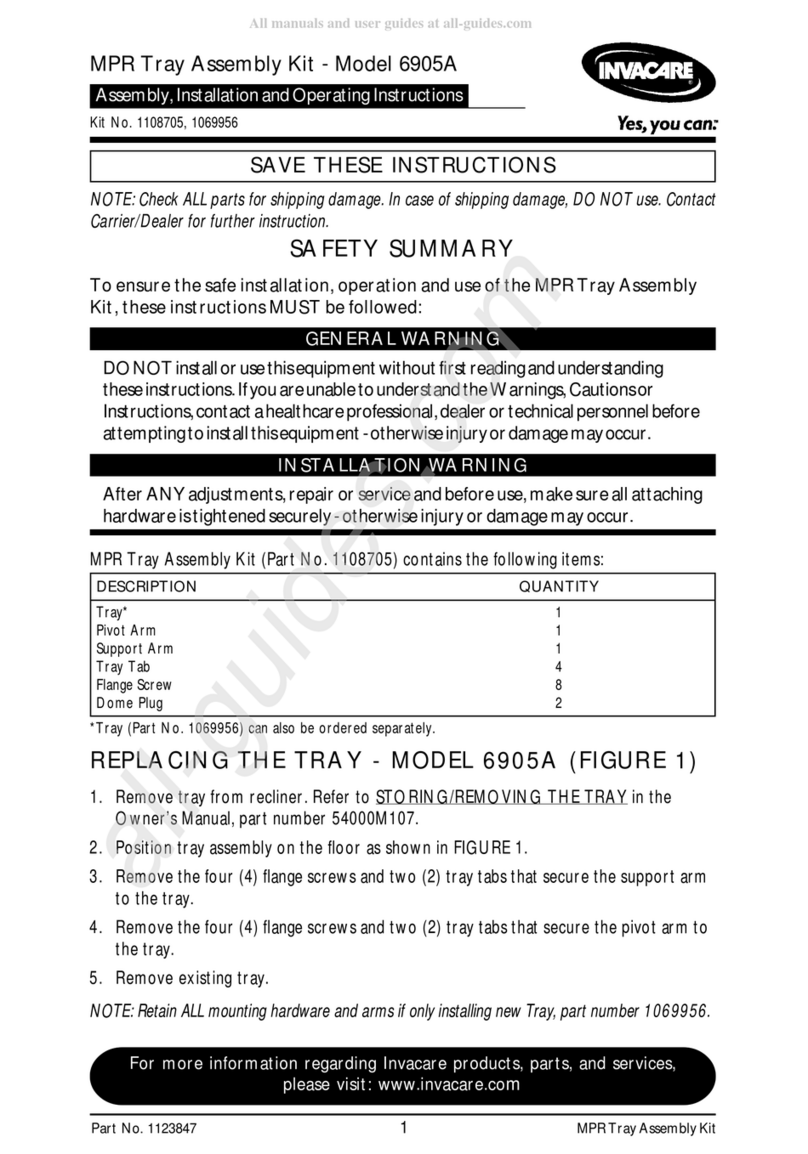
Invacare
Invacare 1108705 Assembly, installation and operating instructions
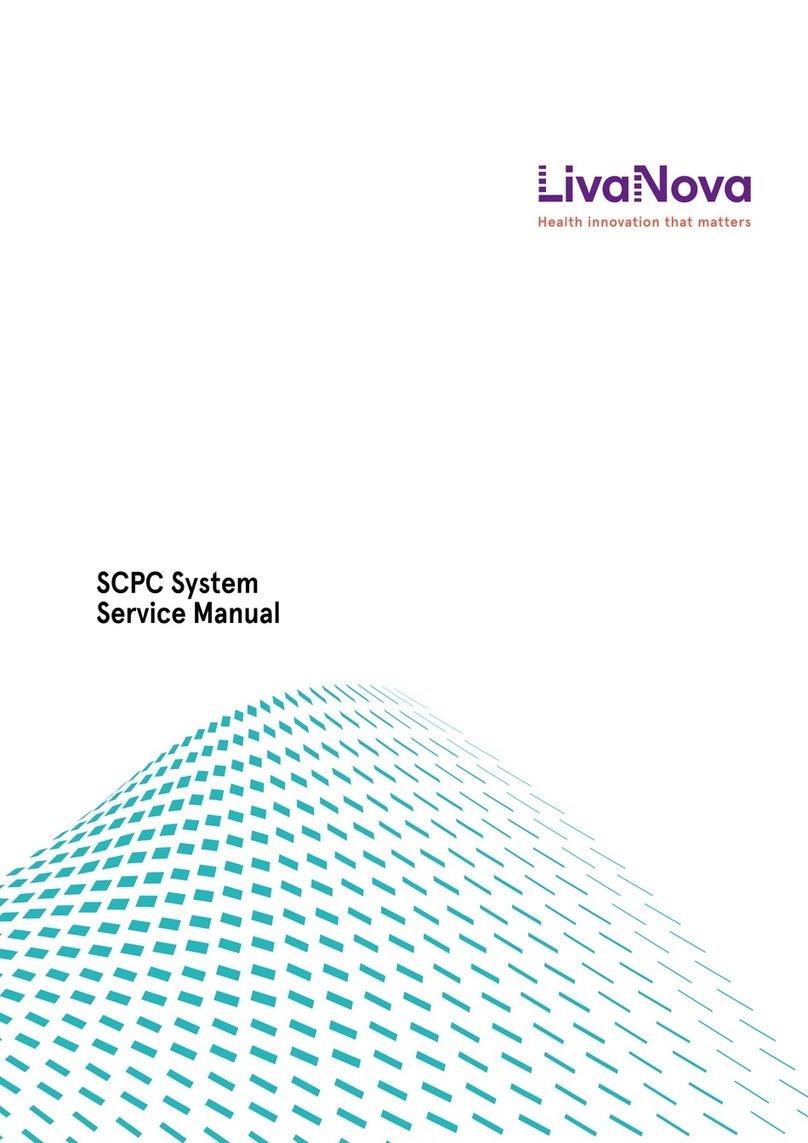
LivaNova
LivaNova SCPC Service manual

Olympus
Olympus ORBEYE OME-V200 instructions
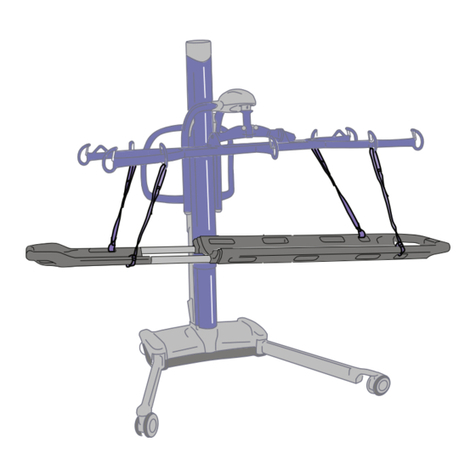
Arjo
Arjo Dual-Loop Attachment Straps Instructions for use
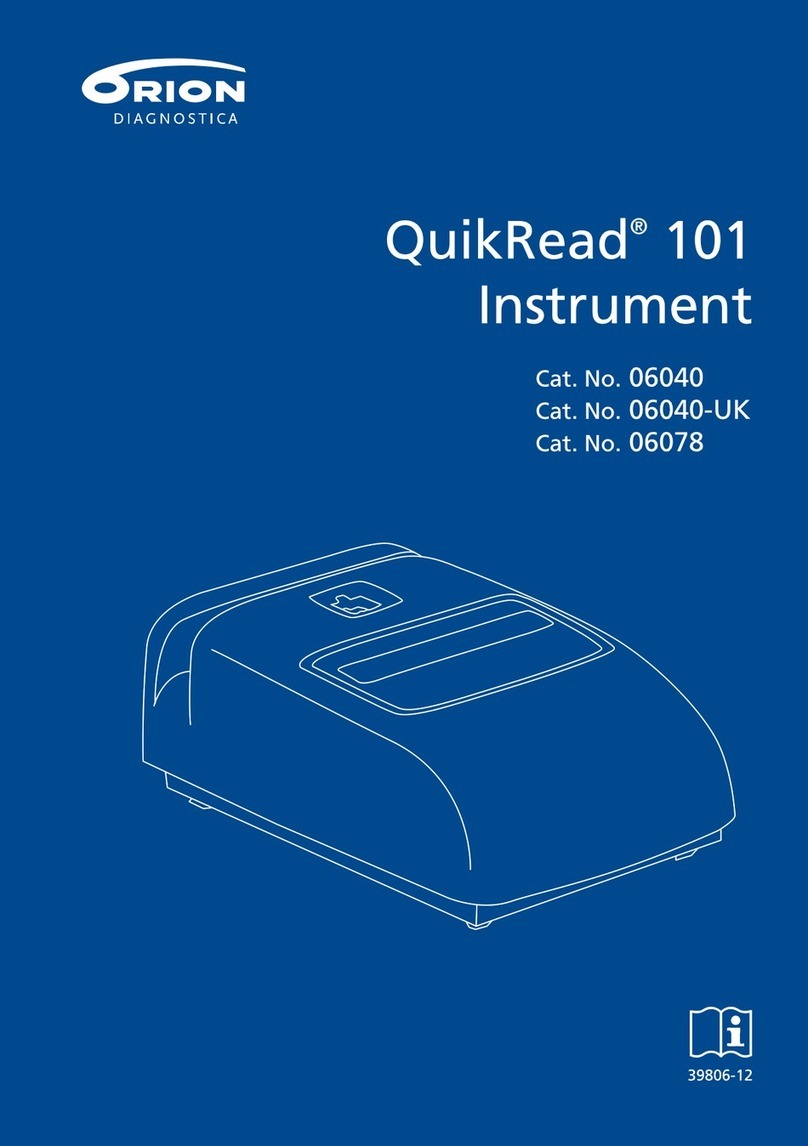
Orion Diagnostica
Orion Diagnostica QuikRead Instrument 101 manual
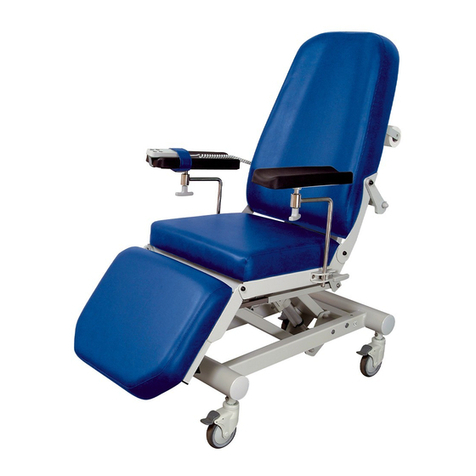
promotal
promotal Polycare 3185 user guide
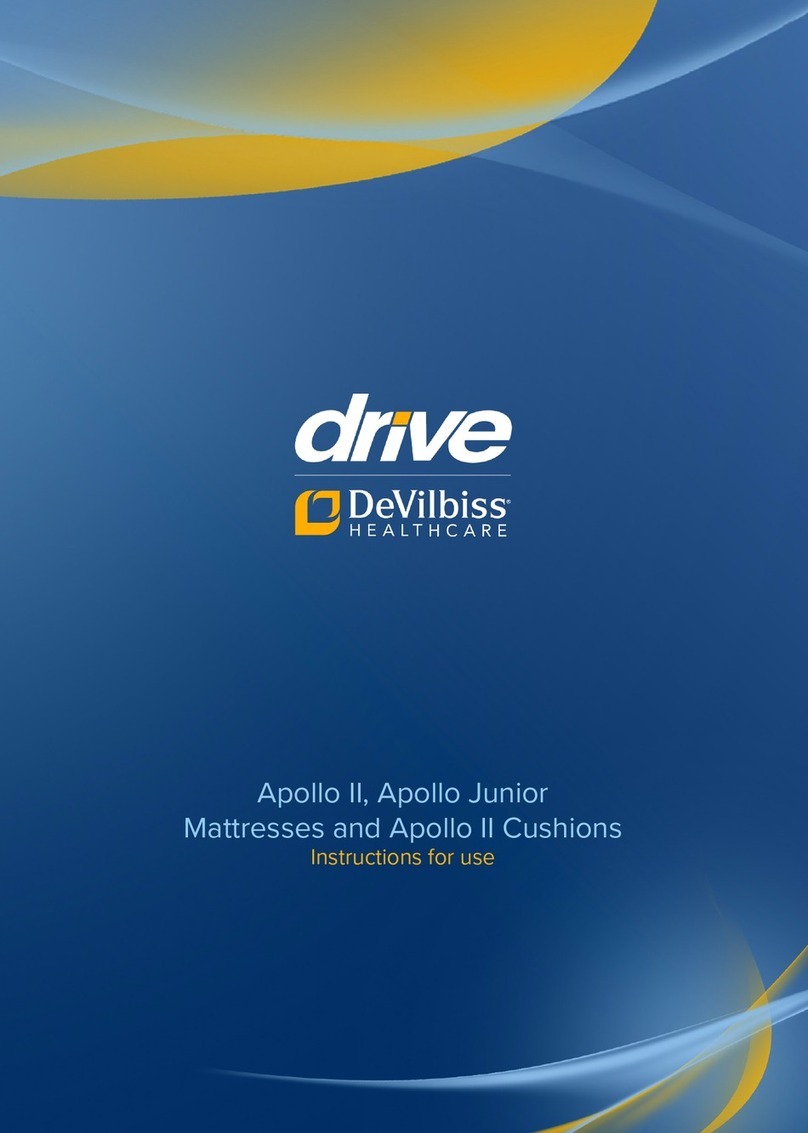
Drive DeVilbiss Healthcare
Drive DeVilbiss Healthcare Apollo II Cushion Instructions for use
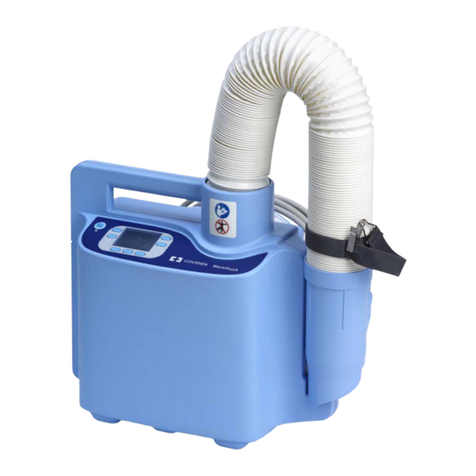
Covidien
Covidien WarmTouch Service manual
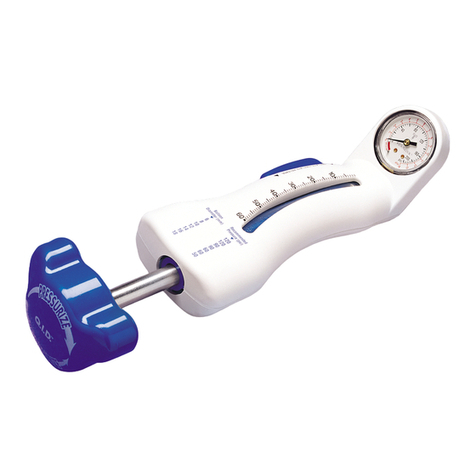
COOK Medical
COOK Medical Quantum QID-1 manual
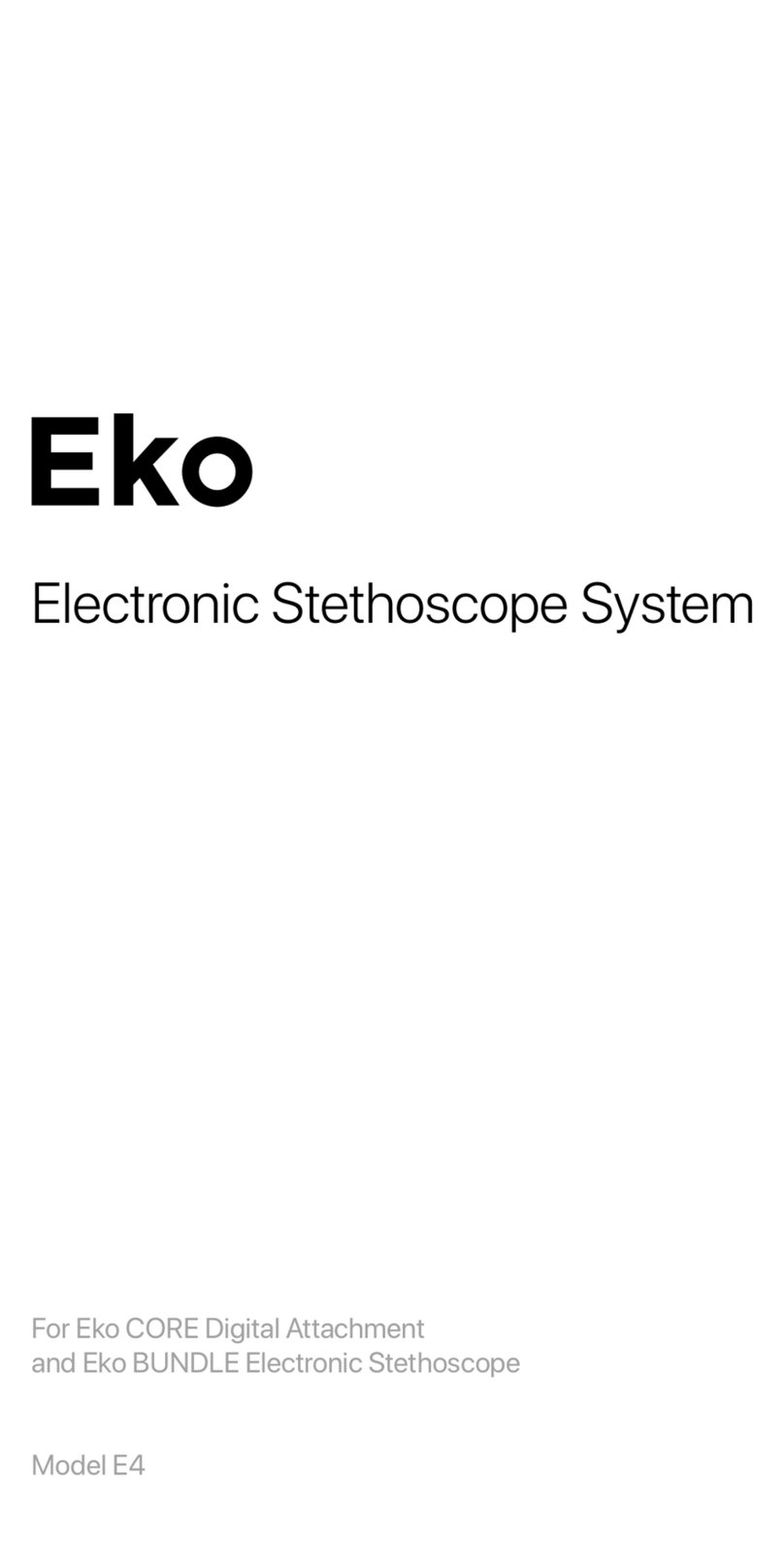
EKO
EKO CORE user manual
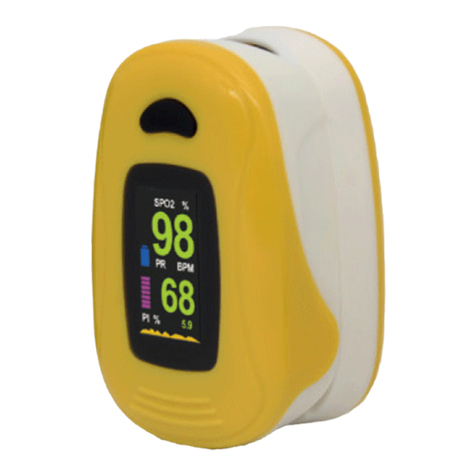
Shenzhen Hexin Zondan Medical Equipment
Shenzhen Hexin Zondan Medical Equipment A3 manual

Novametrix Medical Systems
Novametrix Medical Systems 515 Service manual

